Basilicas in Italy—Rome—1
This blog will not discuss the four major basilicas in Rome: St. Peter’s in Vatican City, St. John Lateran in Rome, St. Mary Major in Rome, and St. Paul Outside the Walls in Rome. I discussed St. John Lateran, the Pope’s cathedral as Bishop of Rome, on October 8, 2020. Information on all of these are found in any guidebook to Rome and on the internet.
This blog and the ones following will discuss the 60+ minor basilicas in Rome. Unless otherwise noted, these have been considered basilicas for centuries. Some are churches of cardinals (each cardinal has a church in Rome) and some are Station churches. Since the 4th Century, pilgrims have come to Rome during Lent to visit various churches each night. There are 40 of these Station churches, including the four major basilicas. See George Weigel’s book, Roman Pilgrimage: The Station Churches.
Papal Basilica of St. Lawrence Outside the Walls, Rome
Station church
The Emperor Constantine I built a small chapel here to mark the burial place of St. Lawrence who was martyred in 258. Other churches followed until the current 13th Century one was built, which is actually a combination of two earlier churches. It was bombed by American forces during the Second World War but has been restored. It is the burial place of St. Lawrence, St. Stephen (the first Christian martyr), five popes, and one Italian prime minister.
The first picture is from a local source and the other two are from Wikipedia.
Basilica of St. Agnes Outside the Walls, Rome
Church of a cardinal
The church is dedicated to St. Agnes, martyred in 304. Emperor Constantine built a church here in 342 which was replaced in the 7th Century. The church has been restored and embellished several times since then. St. Agnes (and her sister) are buried here.
All pictures are from Wikipedia.
Basilica of St. Anastasia at Palatino, Rome
Church of a cardinal and a Station church
The church was originally built in the 4th Century on the slopes of the Palatine Hill but the current church was primarily constructed in a Baroque style in the 17th Century. It is dedicated to St. Anastasia, a 4th Century martyr who is buried here. St. Jerome is thought to have resided near the church. It is the national church for the local Peruvian community and since 2020 has been a church for the Syro-Malabar Rite. During World Youth Day in 2000, the church contained 700,000 hosts that were later received during the Mass. The church has been assigned to a cardinal since the 12th Century.
The top picture is from Alamy and the others are from Wikipedia.
Basilica of St. Balbina on the Aventine Hill, Rome
Church of a cardinal and a Station church
The origin of the building dates to the home of a 2nd Century wealthy Roman that was converted to a church in the 4th Century. The church has been updated many times over the centuries. Father Simpliciano of the Nativity founded the Franciscan Sisters of the Sacred Hearts here in 1875 and today their convent, attached to the church, helps women escape from lives of prostitution. It has been the church of a cardinal since at least the 11th Century.
All pictures are from Wikipedia.
Basilica of St. Bartholomew the Apostle, Rome
Church of a cardinal
The church was originally built in 980 on an island in the Tiber River to house the remains of St. Bartholomew, the Apostle. Several renovations have been made, including a 17th Century renovation using Romanesque and Baroque styles. Since 1999, it has housed relics of modern day martyrs. It has been the church of a cardinal since 1517.
All pictures are from Wikipedia.
Basilica of St. Boniface and St. Alexius, Rome
Church of a cardinal
This church on the Aventine Hill was originally built in the 3rd and 4th Centuries. Dedicated to St. Boniface of Tarsus and St. Alexius of Rome, the church has been renovated several times. Today it is Baroque and Romanesque. The church has a painting of the Madonna thought to have been painted by St. Luke and a fresco dating to 1100. The church has been a titular church for a cardinal since 1587.
All pictures are from Wikipedia.
Basilica of St. Cecilia in Trastevere, Rome
Church of a cardinal and Station church
St. Cecilia, the patron saint of music, was martyred around 220. This church is thought to have been built at the location of her family home. The church was built in the 5th Century but has been rebuilt and renovated several times since then. It now has a Baroque style. St. Cecilia (and her husband, St. Valerian) are buried here. The church has many mosaics and frescoes and has been the church of a cardinal since 1059. Four of these cardinals went on to become pope (and one became an anti-pope.)
All pictures are from Wikipedia.
Basilica of Sts. Celso and Giuliano, Rome
A church has been here since the early 11th Century but the current Baroque church was completed in 1735. It was once the church of high-level Vatican officials. Eugenio Pacelli, who later became Pope Pius XII, was baptized here in 1876. It is now administered by the Institute of Christ the King Sovereign Priest.
The top picture is from Dreamstime and the rest are from Wikipedia.
Basilica of St. Clement at the Lateran, Rome
Church of a cardinal and a Station church
Several ancient Roman buildings occupied this site until the first church was built in the 4th Century. The current Romanesque church was built between 1108 and 1123 and renovated with some Baroque elements in the 17th Century. It is dedicated to St. Clement, the fourth pope. He is buried here as is St. Cyril. It has been the titular church of a cardinal since at least 1049. It has been administered by Irish Dominicans since 1667 and is the national church for the Irish community in Rome. The basilica has a large collection of early medieval wall paintings.
All pictures are from Wikipedia.
Basilica of Sts. Cosmas and Damian, Rome
Church of a cardinal and a Station church
A Roman temple was built at this site in the early 4th Century and became a church in 537. The church is dedicated to Cosmas and Damian, 3rd Century brothers, physicians, and martyrs in modern-day Turkey (and who are buried here). The church has been restored over the years, most notably in the 17th Century. It is adjacent to the Roman Forum and is the main church of the Franciscan Third Order Regular. The church has several 6th and 7th Christian mosaics. During the Middle Ages, the church offered help to the poor and to pilgrims. It has been a titular church for a cardinal since at least 1106.
All pictures are from Wikipedia.
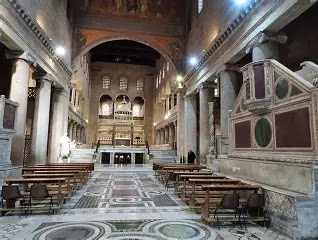













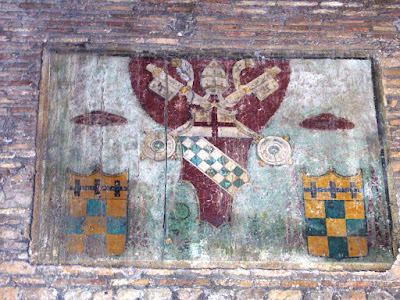








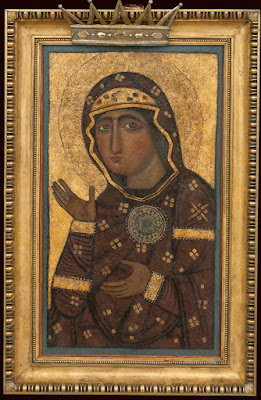







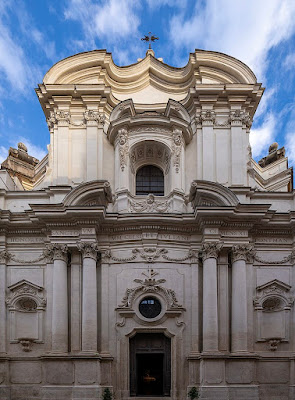







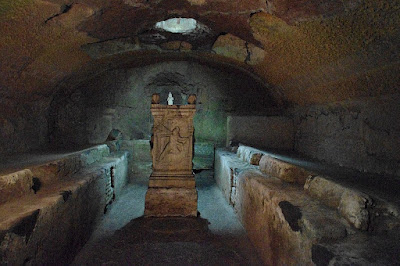






No comments:
Post a Comment